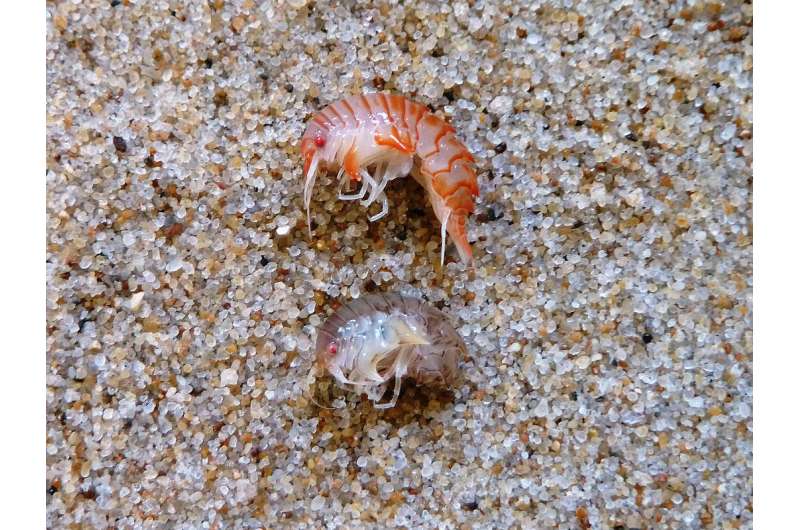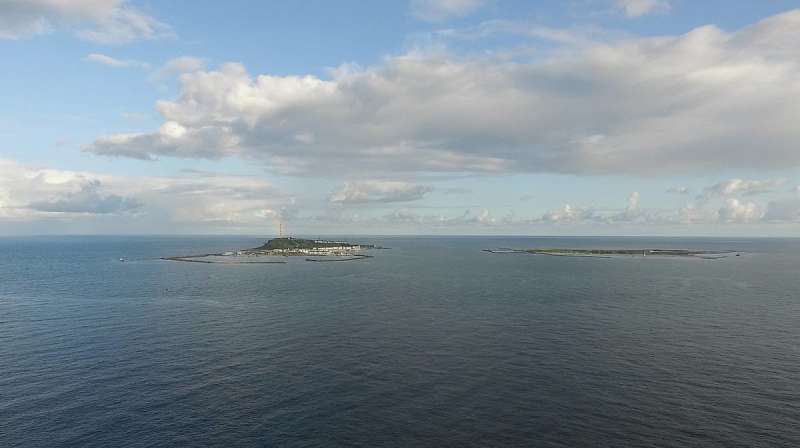New species in the North Sea

Experts from the Alfred Wegener Institute and the Universities of Oldenburg and Potsdam, Germany, have confirmed the existence of a new cryptic amphipod species in the North Sea. For the first time for the description of a new species, they used a level of mitogenomic information, which was normally applied in other areas of genetics. The discovery of Epimeria frankei has been reported in the journal Scientific Reports. In the future, this level of molecular information could revolutionise biodiversity research.
Reports of new species in the North Sea usually relate to animals or algae that were newly introduced by human activities. The discovery of a new amphipod species is proof that there are still unknown organisms lurking in the German Bight. A team of scientists around Dr. Jan Beermann from the Helmholtz Centre for Polar and Marine Research (AWI) and Dr. Michael J. Raupach from the University of Oldenburg, as well as colleagues from the University of Potsdam, have discovered and described a previously overlooked species in the North Sea—a rare event, considering that the region is one of the best-studied seas in the world.
Beermann and Raupach analysed so-called DNA barcodes of North Sea crustaceans, small genetic sequences that are a common tool in modern biodiversity research. Scientists create molecular libraries with these barcodes in order to simplify the identification of species. When Beermann and Raupach analysed their data, the researchers began to wonder whether they were dealing with only one or possibly two species. "Once we had a closer look, we noticed that, for instance, some animals exhibited more pointed plates on their legs than others, but these subtle differences aren't always easy to detect," reports Beermann.
"The moment you realise that you've probably discovered a new species is fascinating and incredibly exciting. The North Sea isn't the first place you'd expect to stumble across an unknown species—especially in a genus, which is comparably large in the North Sea with a body length of up to three centimetres, and which eye-catching colourations have also attracted the attention of earlier generations of researchers," says Jan Beermann. The new Epimeria species was named Epimeria frankei, after Prof. Heinz-Dieter Franke, a renowned ecologist who worked for many years at the AWI marine station at Helgoland, and who was Jan Beermann's Ph.D. mentor.

With the discovery and the availability of extensive information on the two species, both species had to be newly described. "In this regard, we wanted to prepare species descriptions that weren't restricted to the physical appearance but also include detailed genomic information," explains Michael Raupach from the University of Oldenburg. "A few years ago, this would have been an extremely time-consuming. But nowadays, modern technologies make the analyses much faster and easier."
For the descriptions, the scientists made use of the entire mitochondrial genome using state-of-the-art decoding methodologies. In collaboration with the Genomics Team of Prof Michael Hofreiter from the University of Potsdam, they sequenced the genome with cutting-edge technologies. Hofreiter and Raupach write, "We are the first team in the world to analyse the complete genetic material of the mitochondria, base pair by base pair, in the context of a species description."
From the first indication to the confirmation that they truly detected a previously undiscovered amphipod species, it took the researchers more than six years. They were originally investigating the species Epimeria cornigera when they took notice of its sister species. Until then, Epimeria cornigera was commonly assumed to live from the Mediterranean Sea to Iceland—a quite broad but possible distribution. Nevertheless, reliable information on the species' biology was still scarce. As Jan Beermann explains, "We now know that the new species, Epimeria frankei, ranges from the Mediterranean to the North Sea, whereas the old species, Epimeria cornigera, is more restricted to the northern North Atlantic. There is a small area of overlap in the North Sea were both species can be found." With the addition of E. frankei, the number of known Epimeria species in the north-eastern Atlantic increased to a total of five species.
This new discovery emphasises that, even today, marine biodiversity can still be underestimated and that molecular methods have become an indispensable tool for modern biodiversity research. For their publication, the researchers combined molecular genetic and morphological methods and an integrated taxonomic approach. The authors write, "The successful validation of this approach confirms that, for future biodiversity research, taxonomics could also prove to be extremely important for further considerations such as marine conservation."
More information: Jan Beermann et al, Cryptic species in a well-known habitat: applying taxonomics to the amphipod genus Epimeria (Crustacea, Peracarida), Scientific Reports (2018). DOI: 10.1038/s41598-018-25225-x
Journal information: Scientific Reports
Provided by Alfred Wegener Institute





















